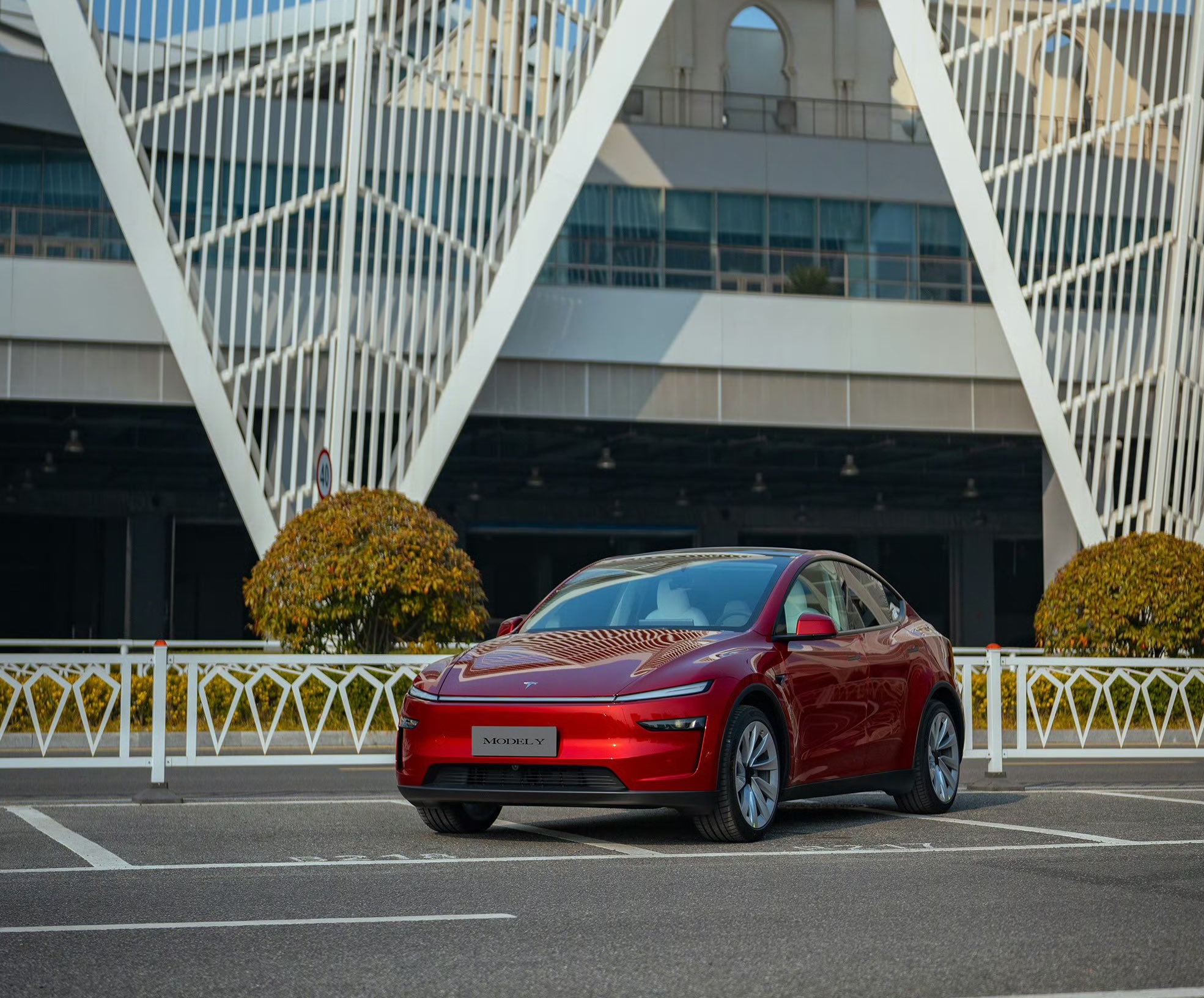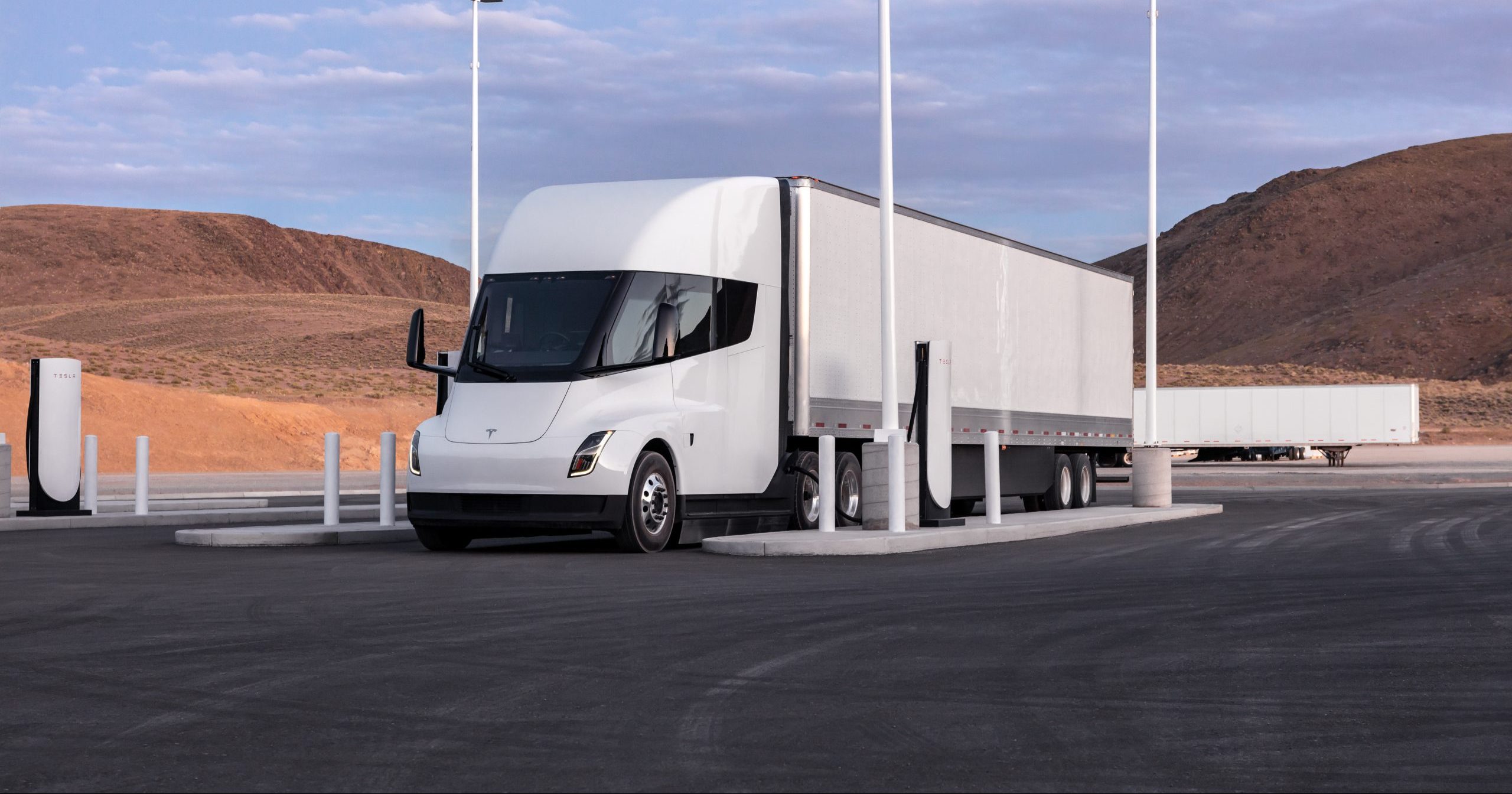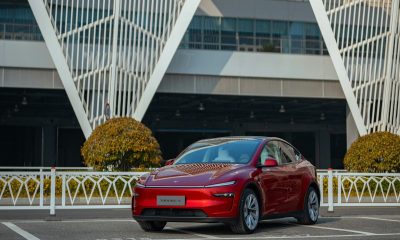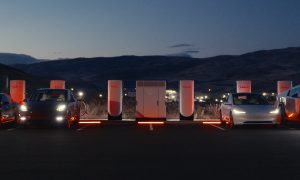You’ll never know how far the Tesla Semi, the Volvo VNR, or other electric semi-trucks will go according to EPA testing standards. The answer is incredibly complex, but simply put, the EPA does not test or evaluate heavy-duty trucks for range ratings. Don’t expect the agency to tell you how far the Tesla Semi or other EV trucks will go because testing simply does not happen.
This allows manufacturers of heavy-duty electric vehicles and semi-trucks to have a profoundly unique ability to control the narrative that surrounds how far their product can go on a full charge. As crazy as it sounds, customers leaping into the all-electric Class 8 sector are putting trust in the companies they buy from when weighing what is arguably the most important metric of the EV ownership experience: range.
Following the certification of the Tesla Semi by the EPA in late October, which Teslarati exclusively reported on, we were bombarded with questions surrounding the vehicle’s EPA-rated range. Light-duty passenger electric vehicles and their success can almost always be gauged by how customers react to range ratings during unveiling events. When Lucid announced it had successfully reached an EPA-rated 520 miles of range on a single charge in the Air Dream Edition, the EV world was astounded. While the vehicle has felt heavy demand on order logs, Lucid still fulfills them to this day.
Meanwhile, other manufacturers bring vehicles to the market with relatively “light” range projections or ratings. It is always disappointing to see a vehicle with so much potential offer so little of what EV owners want: driving range. People do not want to stop at EV chargers. They want to continue their journey on the roads.
Polestar’s recently-unveiled Polestar 3 comes to mind when I (and some others) think of an astounding vehicle with not-so-astounding range and efficiency. Despite its 111 kWh battery pack, the Polestar 3 only offers 379 miles of WLTP-rated range. WLTP ratings are usually much more generous than EPA ratings, so I am anticipating the vehicle to reach around 300 miles of range when the U.S. agency gets its hands on it.
When light-duty vehicles are assessed, approved, and granted Certificates of Conformity from the EPA, they are available for the public to read and include results on efficiency and range testing. This is where heavy-duty vehicles and the testing process differ vastly from light-duty ones.
While these are both vehicle classes that are purchased and used by consumers on public roads, only light-duty vehicles are assessed for range ratings, while heavy-duty vehicle manufacturers do not have their products’ range “evaluated, reported, or included” in an application for certification, the EPA said in an emailed statement.
The EPA has numerous documents relating to this idea, as well as the Society of Automotive Engineers (SAE). However, the documents never directly specified why heavy-duty vehicles are not required to be tested by federal agencies. That does not mean that reasoning is not available.
The fact of the matter is the agency may not have been prepared to test heavy-duty electric vehicles for range ratings, especially this soon. A document found in the Federal Register that was submitted by the EPA and Department of Transportation (USDOT) in 2016 titled, “Greenhouse Gas Emissions and Fuel Efficiency Standards for Medium- and Heavy-Duty Engines and Vehicles— Phase 2,” which established rules to reduce greenhouse gases, includes an interesting tidbit regarding electric vehicles:
“Given the high up-front costs and the developing nature of this technology, the agencies do not project fully electric vocational vehicles to be widely commercially available in the time frame of the final rules. For this reason, the agencies have not based the Phase 2 standards on adoption of full-electric vocational vehicles. We received many comments on electric trucks and buses. Specifically, EEI provided information on the total cost of ownership for electric trucks, and some applications may see attractive long-term cost.”
The time frame of the final rules is set to end in 2027 and apply to model year 2027 vehicles, according to the document.
The agency recognized in 2016 that these technologies may be in development, and we all know they are. As the EPA and NHTSA may not have been able to predict how quickly all-electric heavy-duty trucks would become a prevalent piece of American logistics, the agencies were aware that this technology was coming in the future:
“Phase 2 will include technology advancing standards that will phase in over the long-term (through model year 2027) to result in an ambitious, yet achievable program that will allow manufacturers to meet standards through a mix of different technologies at reasonable cost. The terminal requirements go into effect in 2027, and would apply to MY 2027 and subsequent model year vehicles, unless modified by future rulemaking. The Phase 2 standards will maintain the underlying regulatory structure developed in the Phase 1 program, such as the general categorization of MDVs and HDVs and the separate standards for vehicles and engines. However, the Phase 2 program will build on and advance Phase 1 in a number of important ways including the following: basing standards not only on currently available technologies but also on utilization of technologies now under development or not yet widely deployed while providing significant lead time to assure adequate time to develop, test, and phase in these controls.”
So, how do manufacturers determine range?
This is where things get very tricky because if the EPA is not testing the range itself as an unbiased government organization, it means manufacturers are required to test the vehicles themselves, leaving consumers to trust the companies that they are buying from.
Technically, manufacturers could say whatever they want regarding their electric trucks. Tesla has maintained significant range ratings for the Semi throughout its development, with Elon Musk recently stating the vehicle will have 500 miles of range per charge, with a sizeable payload. Of course, Tesla has been testing its vehicle internally and with the help of verified customers, like Frito Lay, who will take delivery of the first Semi on December 1.
It really comes down to independent testing. Volvo, for example, tested the range of its all-electric VNR Class 8 heavy-duty truck through a pilot program with third-party companies. Through its LIGHTS (Low Impact Green Heavy Transport Solutions) project, Volvo had companies like NFI Industries test the VNR through its commercial operations to prove and demonstrate the truck’s ability.
“By participating in the Volvo LIGHTS project, NFI is helping to prove that Volvo’s VNR Electric trucks can handle the daily rigors of freight movement. NFI continues to be a leader in sustainability, and it comes across in everything they do,” Peter Voorhoeve, president of Volvo Trucks North America, said. “NFI is realizing the immediate value the electric VNR provides—not just by eliminating emissions but creating an enthusiastic workforce complimenting the experience of driving these electric truck models.”
The LIGHTS project ran through 2021 and provided Volvo with “real-world operational data critical to the successful commercial scaling of these vehicles.”
So how do you know how far an all-electric Class 8 heavy-duty vehicle goes? You might literally have to find out for yourself, or you can trust the manufacturer’s word for it.
I’d love to hear from you! If you have any comments, concerns, or questions, please email me at joey@teslarati.com. You can also reach me on Twitter @KlenderJoey, or if you have news tips, you can email us at tips@teslarati.com.
Elon Musk
Tesla analysts believe Musk and Trump feud will pass
Tesla CEO Elon Musk and U.S. President Donald Trump’s feud shall pass, several bulls say.

Tesla analysts are breaking down the current feud between CEO Elon Musk and U.S. President Donald Trump, as the two continue to disagree on the “Big Beautiful Bill” and its impact on the country’s national debt.
Musk, who headed the Department of Government Efficiency (DOGE) under the Trump Administration, left his post in May. Soon thereafter, he and President Trump entered a very public and verbal disagreement, where things turned sour. They reconciled to an extent, and things seemed to be in the past.
However, the second disagreement between the two started on Monday, as Musk continued to push back on the “Big Beautiful Bill” that the Trump administration is attempting to sign into law. It would, by Musk’s estimation, increase spending and reverse the work DOGE did to trim the deficit.
Every member of Congress who campaigned on reducing government spending and then immediately voted for the biggest debt increase in history should hang their head in shame!
And they will lose their primary next year if it is the last thing I do on this Earth.
— Elon Musk (@elonmusk) June 30, 2025
President Trump has hinted that DOGE could be “the monster” that “eats Elon,” threatening to end the subsidies that SpaceX and Tesla receive. Musk has not been opposed to ending government subsidies for companies, including his own, as long as they are all abolished.
How Tesla could benefit from the ‘Big Beautiful Bill’ that axes EV subsidies
Despite this contentious back-and-forth between the two, analysts are sharing their opinions now, and a few of the more bullish Tesla observers are convinced that this feud will pass, Trump and Musk will resolve their differences as they have before, and things will return to normal.
ARK Invest’s Cathie Wood said this morning that the feud between Musk and Trump is another example of “this too shall pass:”
BREAKING: CATHIE WOOD SAYS — ELON AND TRUMP FEUD “WILL PASS” 👀 $TSLA
She remains bullish ! pic.twitter.com/w5rW2gfCkx
— TheSonOfWalkley (@TheSonOfWalkley) July 1, 2025
Additionally, Wedbush’s Dan Ives, in a note to investors this morning, said that the situation “will settle:”
“We believe this situation will settle and at the end of the day Musk needs Trump and Trump needs Musk given the AI Arms Race going on between the US and China. The jabs between Musk and Trump will continue as the Budget rolls through Congress but Tesla investors want Musk to focus on driving Tesla and stop this political angle…which has turned into a life of its own in a roller coaster ride since the November elections.”
Tesla shares are down about 5 percent at 3:10 p.m. on the East Coast.
Elon Musk
Tesla scrambles after Musk sidekick exit, CEO takes over sales
Tesla CEO Elon Musk is reportedly overseeing sales in North America and Europe, Bloomberg reports.

Tesla scrambled its executives around following the exit of CEO Elon Musk’s sidekick last week, Omead Afshar. Afshar was relieved of his duties as Head of Sales for both North America and Europe.
Bloomberg is reporting that Musk is now overseeing both regions for sales, according to sources familiar with the matter. Afshar left the company last week, likely due to slow sales in both markets, ending a seven-year term with the electric automaker.
Tesla’s Omead Afshar, known as Elon Musk’s right-hand man, leaves company: reports
Afshar was promoted to the role late last year as Musk was becoming more involved in the road to the White House with President Donald Trump.
Afshar, whose LinkedIn account stated he was working within the “Office of the CEO,” was known as Musk’s right-hand man for years.
Additionally, Tom Zhu, currently the Senior Vice President of Automotive at Tesla, will oversee sales in Asia, according to the report.
It is a scramble by Tesla to get the company’s proven executives over the pain points the automaker has found halfway through the year. Sales are looking to be close to the 1.8 million vehicles the company delivered in both of the past two years.
Tesla is pivoting to pay more attention to the struggling automotive sales that it has felt over the past six months. Although it is still performing well and is the best-selling EV maker by a long way, it is struggling to find growth despite redesigning its vehicles and launching new tech and improvements within them.
The company is also looking to focus more on its deployment of autonomous tech, especially as it recently launched its Robotaxi platform in Austin just over a week ago.
However, while this is the long-term catalyst for Tesla, sales still need some work, and it appears the company’s strategy is to put its biggest guns on its biggest problems.
News
Tesla upgrades Model 3 and Model Y in China, hikes price for long-range sedan
Tesla’s long-range Model 3 now comes with a higher CLTC-rated range of 753 km (468 miles).

Tesla has rolled out a series of quiet upgrades to its Model 3 and Model Y in China, enhancing range and performance for long-range variants. The updates come with a price hike for the Model 3 Long Range All-Wheel Drive, which now costs RMB 285,500 (about $39,300), up RMB 10,000 ($1,400) from the previous price.
Model 3 gets acceleration boost, extended range
Tesla’s long-range Model 3 now comes with a higher CLTC-rated range of 753 km (468 miles), up from 713 km (443 miles), and a faster 0–100 km/h acceleration time of 3.8 seconds, down from 4.4 seconds. These changes suggest that Tesla has bundled the previously optional Acceleration Boost for the Model 3, once priced at RMB 14,100 ($1,968), as a standard feature.
Delivery wait times for the long-range Model 3 have also been shortened, from 3–5 weeks to just 1–3 weeks, as per CNEV Post. No changes were made to the entry-level RWD or Performance versions, which retain their RMB 235,500 and RMB 339,500 price points, respectively. Wait times for those trims also remain at 1–3 weeks and 8–10 weeks.
Model Y range increases, pricing holds steady
The Model Y Long Range has also seen its CLTC-rated range increase from 719 km (447 miles) to 750 km (466 miles), though its price remains unchanged at RMB 313,500 ($43,759). The model maintains a 0–100 km/h time of 4.3 seconds.
Tesla also updated delivery times for the Model Y lineup. The Long Range variant now shows a wait time of 1–3 weeks, an improvement from the previous 3–5 weeks. The entry-level RWD version maintained its starting price of RMB 263,500, though its delivery window is now shorter at 2–4 weeks.
Tesla continues to offer several purchase incentives in China, including an RMB 8,000 discount for select paint options, an RMB 8,000 insurance subsidy, and five years of interest-free financing for eligible variants.
-

 Elon Musk1 day ago
Elon Musk1 day agoTesla investors will be shocked by Jim Cramer’s latest assessment
-

 News6 days ago
News6 days agoTesla Robotaxi’s biggest challenge seems to be this one thing
-

 News2 weeks ago
News2 weeks agoTesla’s Grok integration will be more realistic with this cool feature
-

 Elon Musk2 weeks ago
Elon Musk2 weeks agoElon Musk slams Bloomberg’s shocking xAI cash burn claims
-

 News2 weeks ago
News2 weeks agoTesla China roars back with highest vehicle registrations this Q2 so far
-

 News2 weeks ago
News2 weeks agoTexas lawmakers urge Tesla to delay Austin robotaxi launch to September
-

 News2 weeks ago
News2 weeks agoTesla dominates Cars.com’s Made in America Index with clean sweep
-

 Elon Musk1 week ago
Elon Musk1 week agoFirst Look at Tesla’s Robotaxi App: features, design, and more
















